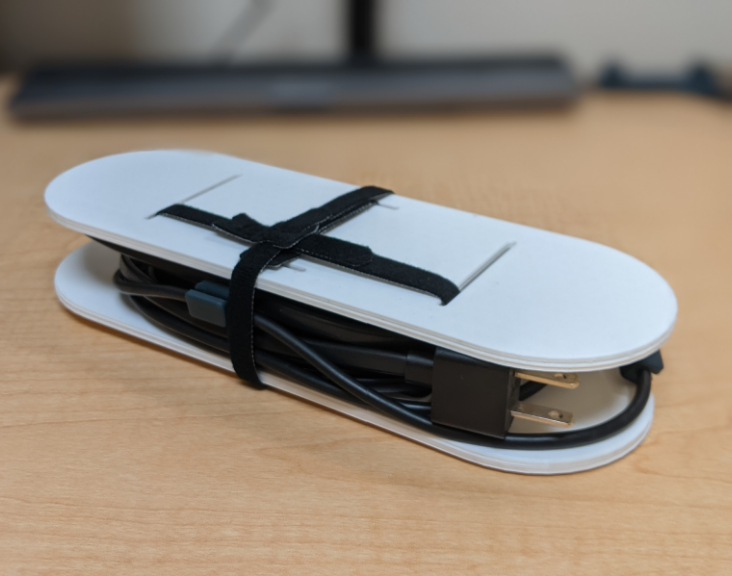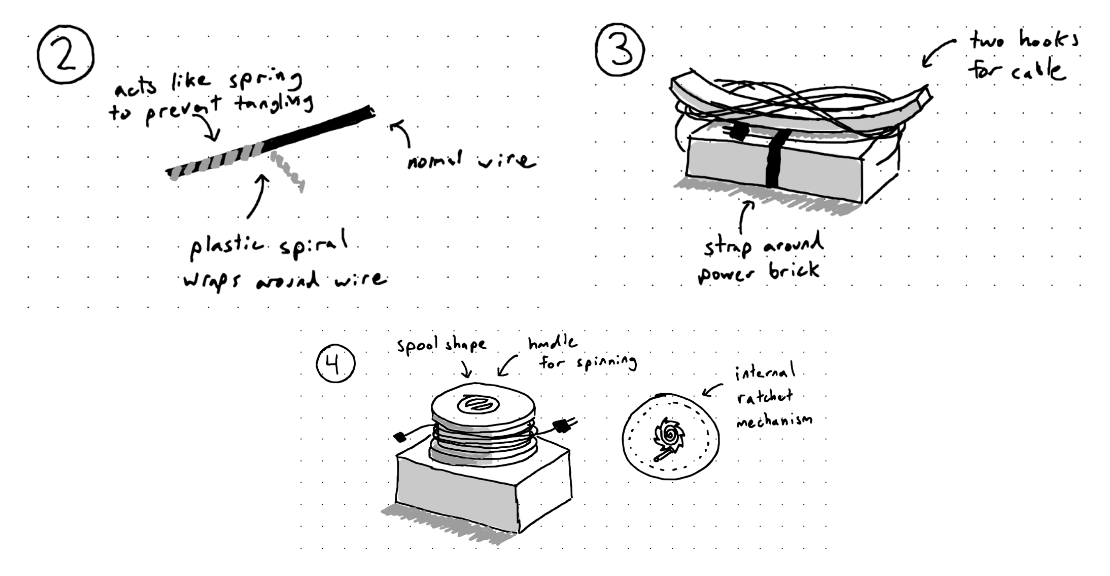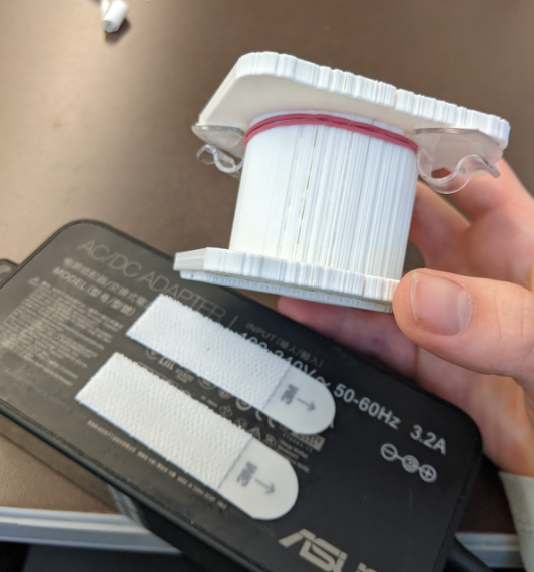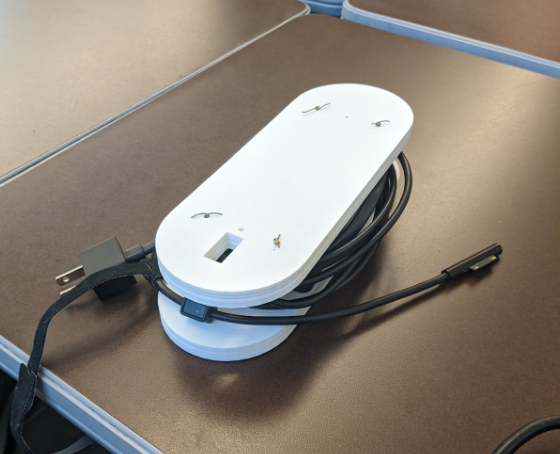March 2021

Problem Statement
Electronic devices are so prevalent in our everyday lives, and with them come the many cables, outlets and other electrical equipment needed to charge and operate them. To reduce the inconvenience caused by the tangled wires they carry with them every day, students need an affordable device that keeps cables organized in and out of their backpacks.
Development
This was a group project for one of my classes during my second year at Cal Poly. It was fairly open, and we got decide what problem we were to solve and how we wanted to solve it. We initially wanted to waterproof a powerstrip to prevent water damage, but after student feedback, we wanted to focus on organization since that seemed like a more prevalent issue.
When came up with a lot of ideas and narrowed them down to five. Using the drawing skills we were practicing in class, I made a graphic for each one.

The ideas we decided to not prototype

The ideas we decided to prototype
The two we decided to prototype were a "spool" design and a "sandwich" design. The "spool" was printed in 2 pieces assembled with tape. It attached itself to the power brick with velcro command strips. The "sandwich" design has two plates that I attached with small rubber bands.

The spool prototype

The sandwich prototype
In our discussions with these students about these prototypes, they liked the rigidity of the spool design and how we decided to use velcro tape to attach it to a power brick. It made the cable feel secure. However, they did not like how bulky it was and preferred the slimness of the sandwich design. With this feedback, we decided to make an improved version of the sandwich design as our final prototype.

In this project, I learned how a lot about how the engineering design process works. We did a lot of research before even prototyping, which is something that I hadn't done very much before. It helped give us an idea of current solutions, and this helped us brainstorm feasible prototype ideas. Also, the more structured feedback we got gave us a lot of motivation to keep improving upon previous iterations. While I have done these things before, I haven't done them to the degree we were required to for this project, and I will definitely add these steps to my design process in future projects.
